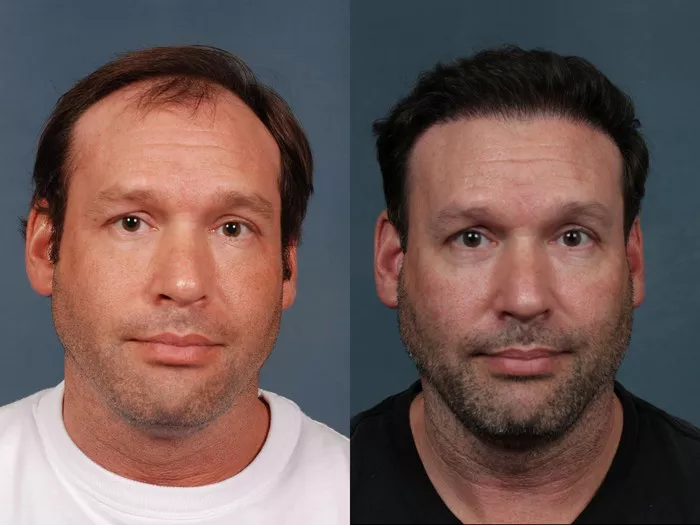Undergoing a hair transplant is a transformative journey for many seeking to regain confidence and restore a fuller head of hair. As with any surgical procedure, questions and concerns about the recovery process are natural. One common query that often arises is, “Is the donor area still tender after a hair transplant?” In this article, we will explore the sensations and experiences associated with the donor area post-transplant, providing insights into what individuals can expect during the recovery phase.
1. Understanding the Hair Transplant Process
Before delving into post-transplant sensations, it’s essential to have a basic understanding of the hair transplant procedure. Hair transplantation involves the extraction of hair follicles, typically from the back or sides of the head, known as the donor area. These follicles are then meticulously implanted into the recipient area, where hair growth is desired. The meticulous nature of the procedure and advancements in technology contribute to minimizing discomfort during the surgery.
2. The Initial Post-Transplant Period: Managing Discomfort
In the immediate aftermath of a hair transplant, individuals may experience mild discomfort or tenderness in the donor area. This sensation is a normal part of the healing process and is often managed well with prescribed pain medications. The discomfort is typically short-lived, lasting for a few days after the procedure. During this time, adhering to post-operative care instructions, including avoiding strenuous activities, can help minimize any potential discomfort.
3. Post-Operative Healing: Gradual Reduction of Sensations
As the days progress following the transplant, individuals usually notice a gradual reduction in tenderness in the donor area. The body’s natural healing processes come into play, and any residual discomfort tends to subside. It’s important to note that the level of sensitivity varies among individuals, and factors such as pain tolerance and the specific technique used in the transplant can influence post-operative sensations.
4. Scar Formation and Tenderness: FUT vs. FUE Techniques
The method used in the hair transplant procedure can impact the level of tenderness in the donor area. Follicular Unit Transplantation (FUT) involves the removal of a strip of scalp from the donor area, leading to the creation of a linear scar. In FUT, tenderness may be more pronounced initially due to the nature of the incision. Conversely, Follicular Unit Excision (FUE) involves individual follicle extraction, resulting in tiny, scattered scars. While FUE tends to have a quicker initial recovery, both methods generally lead to diminished tenderness over time.
5. Individual Variability: Factors Influencing Sensations
Individual responses to hair transplant procedures vary, and several factors contribute to the level of tenderness in the donor area. Skin type, personal pain threshold, and adherence to post-operative care instructions all play roles in determining the post-transplant experience. While some individuals may report minimal discomfort, others may experience sensations for a slightly longer duration.
6. Long-Term Considerations: Scar Visibility and Sensitivity
Beyond the initial post-transplant period, individuals may wonder about the long-term effects on the donor area. In both FUT and FUE procedures, the scars typically become less noticeable over time. Scar visibility is influenced by factors such as hair length and the individual’s healing process. While tenderness is expected to diminish significantly, some individuals may experience mild residual sensitivity in the donor area for an extended period.
7. Post-Transplant Care: Minimizing Discomfort
Ensuring optimal post-transplant care is essential for minimizing discomfort in the donor area. Following the post-operative instructions provided by the transplant surgeon is crucial. This may include gentle cleansing of the donor area, avoiding sun exposure, refraining from activities that could strain the scalp, and taking any prescribed medications. Adhering to these guidelines promotes proper healing and reduces the likelihood of prolonged tenderness.
8. When to Seek Professional Guidance: Addressing Concerns
While mild tenderness is expected in the initial stages of recovery, persistent or worsening discomfort should prompt individuals to seek professional guidance. In rare cases, issues such as infection or improper healing may contribute to prolonged sensations. Timely communication with the transplant surgeon allows for the assessment of any concerns and the implementation of appropriate interventions.
See Also: [Revealed!] Why is My Hair Transplant Patchy After 1 Year?
Conclusion
In the realm of hair transplants, understanding the sensations associated with the donor area post-transplant is crucial for individuals embarking on this transformative journey. While it is normal to experience some tenderness in the initial days following the procedure, the discomfort is usually manageable and diminishes asthe healing process unfolds. Factors such as the chosen transplantation technique, individual variability, and adherence to post-operative care guidelines influence the post-transplant experience.
Navigating the recovery period with patience and attentiveness to post-operative care instructions contributes to a smoother healing process. As the days and weeks pass, individuals can look forward to a reduction in tenderness and the gradual return to normal sensations in the donor area. In the rare instances where concerns persist, seeking professional guidance ensures that any issues are promptly addressed, fostering a positive and successful hair transplant experience.


